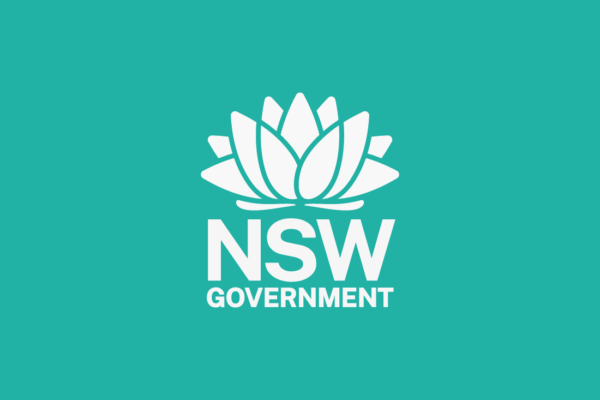How clear are your teams on their roles and responsibilities at work?
According to research by Gallup, only one in two employees strongly agree that they know what’s expected of them at work. That means 50 per cent of your people might be unsure of what they’re doing.
This lack of role clarity in the workplace, aka role confusion, can affect their ability to get work done. It can also boost work-related stress and anxiety levels, affecting mental health and increasing team turnover.
To avoid this, let’s dive into what role clarity is, how you can identify when it’s lacking and what you need to do to achieve it.
What role clarity looks like
First, let’s define role clarity.
Role clarity in business refers to employees’ level of understanding and agreement regarding their specific responsibilities, tasks, and expectations within their assigned roles.
It forms the foundation of your organisational structure, position descriptions, salaries, and organisation goals and priorities.
It includes clearly understanding what needs to be accomplished, how it contributes to your organisation’s overall goals, and how it aligns with the responsibilities of other team members.
Essentially, it ensures that each team member has a clear roadmap for their work, knows what’s expected of them and can order tasks accordingly.

Benefits of role clarity in the workplace
You can gain a whole heap of benefits, both on a company-wide and individual level, from people knowing what they’re doing.
By achieving role clarity, you can:
- Minimise confusion, role conflict and frustration
- Reduce overlap or duplication of efforts between roles
- Lessen friction and promote efficient collaboration
- Increase engagement, job satisfaction and retention
- Reduce psychosocial risks at work, such as burnout
- Increase task and workplace productivity (including in hybrid teams)
But the big question is, how do you know if you’re lacking clarity in the first place?

Identifying role ambiguity
Have you heard your team saying any of the following: “That’s not my job”, “Who does that sit with?” or “I thought you were doing that”.
These are the types of comments you commonly hear when job roles and responsibilities in your workplace aren’t clearly defined.
Another indicator of role uncertainty is if everything else seems to be in place. For example, you’ve hired top talent, invested in your onboarding processes, prioritised employee wellbeing and work culture, and something still isn’t working.
Confusion and lack of clarity may be the culprit!
This may look like decreased employee motivation, frequent double handling of work or overlapping tasks causing inefficiencies or the blame game or arguments occurring over who was responsible for which task.
As well as searching for subtle signs, you can identify role ambiguity by seeking feedback from your teams.
Consider emailing out a role clarity questionnaire. Alternatively, ask employees to write down the five key tasks they’re expected to achieve in their role and see if this list compares to yours.

Role clarity questionnaire example
To make identifying role clarity in your workplace easier, here’s an example of the types of questions you could use in a role clarity questionnaire:
Job responsibilities
- Can you list the primary responsibilities and tasks associated with your role?
- Do you clearly understand what’s expected of you in your position?
- Are there any responsibilities or tasks that are unclear or need further clarification?
Goal alignment
- Do you understand how your role contributes to our organisation’s overall goals and objectives?
- Are you aware of the key performance indicators (KPIs) or targets you should be working towards?
- Do you feel that your work directly impacts the success of our organisation?
Role boundaries and relationships
- Do you know who you should collaborate with and rely on to fulfil your responsibilities effectively?
- Are there any overlapping responsibilities or areas where roles might conflict?
- Do you clearly understand the roles and responsibilities of your colleagues or team members?
Performance expectations
- Do you know the quality and quantity of work expected from you?
- Are you aware of any specific deadlines or timeframes for completing tasks or projects?
- Have you received feedback or performance evaluations that help you understand how well you’re meeting expectations?
Development and growth
- Are you aware of any career development opportunities or pathways associated with your role?
- Do you know the skills or competencies you need to develop to progress in your career?
- Are you receiving adequate support and resources to develop your skills and knowledge further?
Communication and feedback
- Do you feel you receive clear and timely communication regarding changes, updates, or expectations related to your role?
- Are there any channels or mechanisms in place for you to seek clarification or provide feedback on your role?
- Do you feel comfortable discussing role-related issues or concerns with your manager or team members?

How to enhance role clarity
If the signs and feedback look like role ambiguity is an issue in your organisation, it’s important you resolve it so you can reap the benefits.
So, what do you need to do to boost role clarification? Here are some of our recommended strategies to pave the way for success:
- Define each role – Clearly outline the responsibilities, tasks and objectives of each job role in your organisation. Importantly, ensure you put them down on paper, make them accessible to employees and update as roles evolve.
- Set clear expectations – Establish clear performance expectations for each role. This means clearly communicating the goals, targets and key performance indicators (KPIs) that employees should be striving for. Outcomes are arguably more important than tasks as they don’t date.
- Foster open communication – Make sure people feel comfortable seeking clarification on their roles, asking questions and providing input. Create channels for this, such as regular team meetings, one-on-ones and performance reviews.
- Encourage collaboration – Roles often overlap, so encouraging cooperation is crucial. You can do this by promoting teamwork and knowledge sharing and communicating how roles intersect.
- Provide training and resources – Invest in training and development programs that align with employees’ roles and career aspirations. Plus, provide them with the right resources and materials. This will ensure they can do what’s expected of them.

Role clarity is a long-term commitment
Achieving high role clarity isn’t a quick fix. It’s a continuous process that requires commitment and ongoing adjustment.
By defining and documenting each job description, setting clear expectations, fostering open dialogue, and providing the right training and resources, you can create an environment where employees thrive, productivity soars, and your organisation achieves long-term success!




